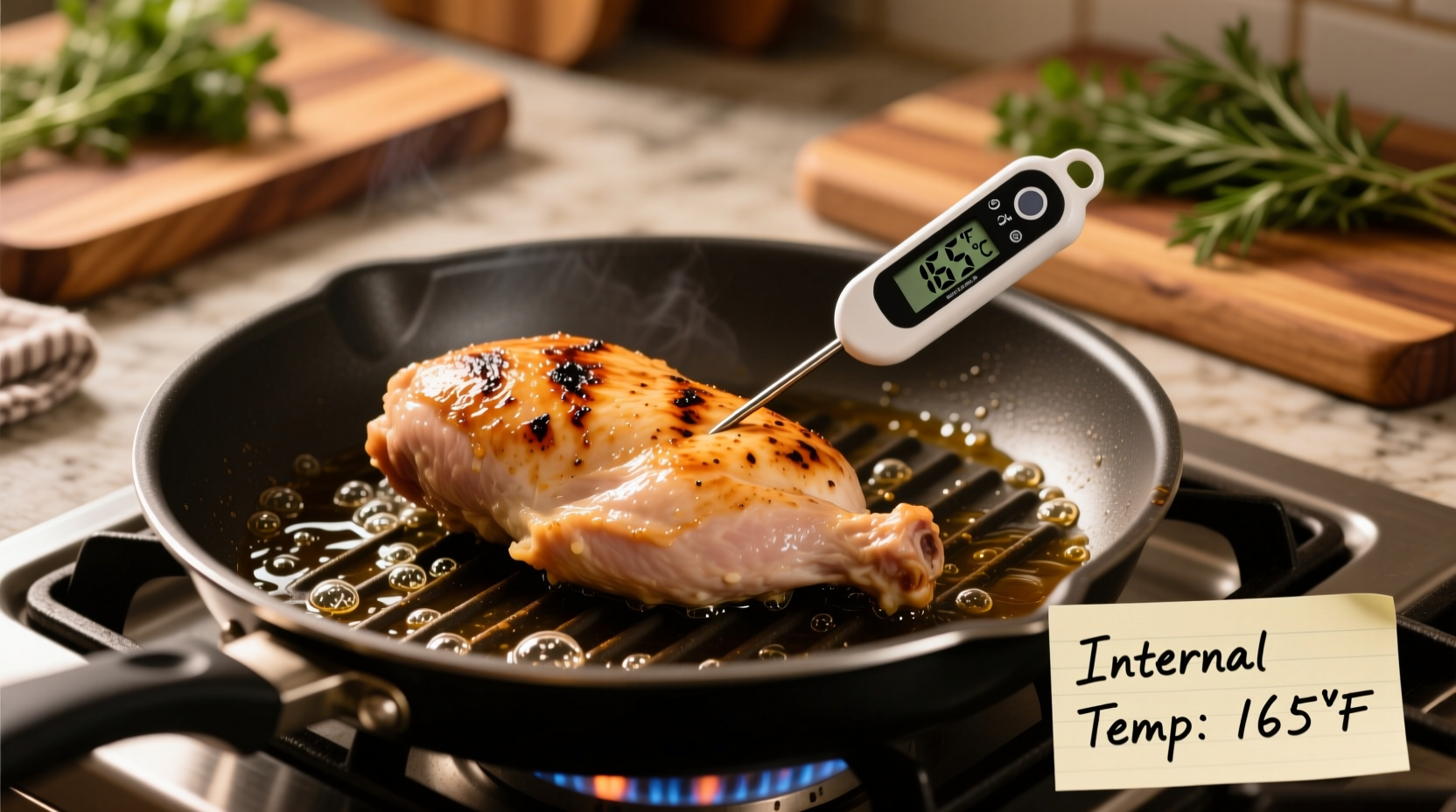Why Temperature Matters More Than Time or Color
Guessing doneness by cooking time or visual cues like clear juices creates serious food safety risks. The USDA’s Food Safety and Inspection Service confirms that 165°F is the only reliable indicator chicken has reached a pathogen-killing threshold. At this temperature, Salmonella bacteria die within seconds, eliminating the risk of food poisoning that causes 1.35 million U.S. illnesses annually according to CDC data.
How to Measure Temperature Correctly: Avoid These Mistakes
Over 40% of home cooks misjudge chicken doneness (per NSF International kitchen safety studies). Follow these science-backed steps:
- Insert thermometer sideways into the thickest part of meat, avoiding bones
- Check multiple spots in larger cuts like whole chickens
- Wait 10 seconds for digital readings to stabilize
- Sanitize probe between checks to prevent cross-contamination

Temperature Evolution: Why 165°F Replaced Old Guidelines
Historical recommendations varied wildly—some cookbooks suggested 180°F for whole chickens until the 1990s. Modern food science revealed this overcooked poultry unnecessarily. The USDA updated standards to 165°F in 2006 after research proved this temperature instantly destroys pathogens when verified with accurate thermometers. This change balances safety with texture preservation, as confirmed by the USDA FSIS Poultry Guidelines.
| Chicken Cut | Minimum Safe Temp | Critical Verification Tip |
|---|---|---|
| Chicken breasts | 165°F (73.9°C) | Check near bone junction where meat is thickest |
| Thighs & drumsticks | 165°F (73.9°C) | Measure between skin and bone in meaty section |
| Ground chicken | 165°F (73.9°C) | Test multiple patties; bacteria distributes evenly |
| Stuffed chicken | 165°F (73.9°C) | Verify both meat AND stuffing reach temperature |
Context Boundaries: When Temperature Rules Change
The 165°F standard applies universally to conventional cooking methods (oven, grill, stovetop). However, sous vide requires different protocols: holding chicken at 145°F for 30+ minutes achieves safety through time-temperature synergy. Never rely on color alone—pink tints can persist in safely cooked chicken due to myoglobin reactions, while overcooked chicken may still appear white. Always prioritize thermometer verification over visual assessment.
Resting: The Secret to Juicy, Safe Chicken
Remove chicken from heat at 160-162°F—the residual heat will carry it to 165°F during the mandatory 3-5 minute rest period. This allows juices to redistribute while maintaining safety. Cutting too soon causes moisture loss, creating dry meat even when properly cooked. For whole birds, tent loosely with foil during resting to prevent surface cooling.
Troubleshooting Common Temperature Issues
Problem: Thermometer reads 165°F but chicken seems dry
Solution: You likely held it at peak temperature too long. Remove at 162°F and rest properly.
Problem: Juices run clear but thermometer shows 155°F
Solution: Continue cooking—clear juices don’t guarantee safety. Pathogens can survive below 165°F.
Problem: Uneven temperatures in different parts
Solution: Reposition chicken during cooking and check multiple zones. Thighs often cook slower than breasts.











 浙公网安备
33010002000092号
浙公网安备
33010002000092号 浙B2-20120091-4
浙B2-20120091-4